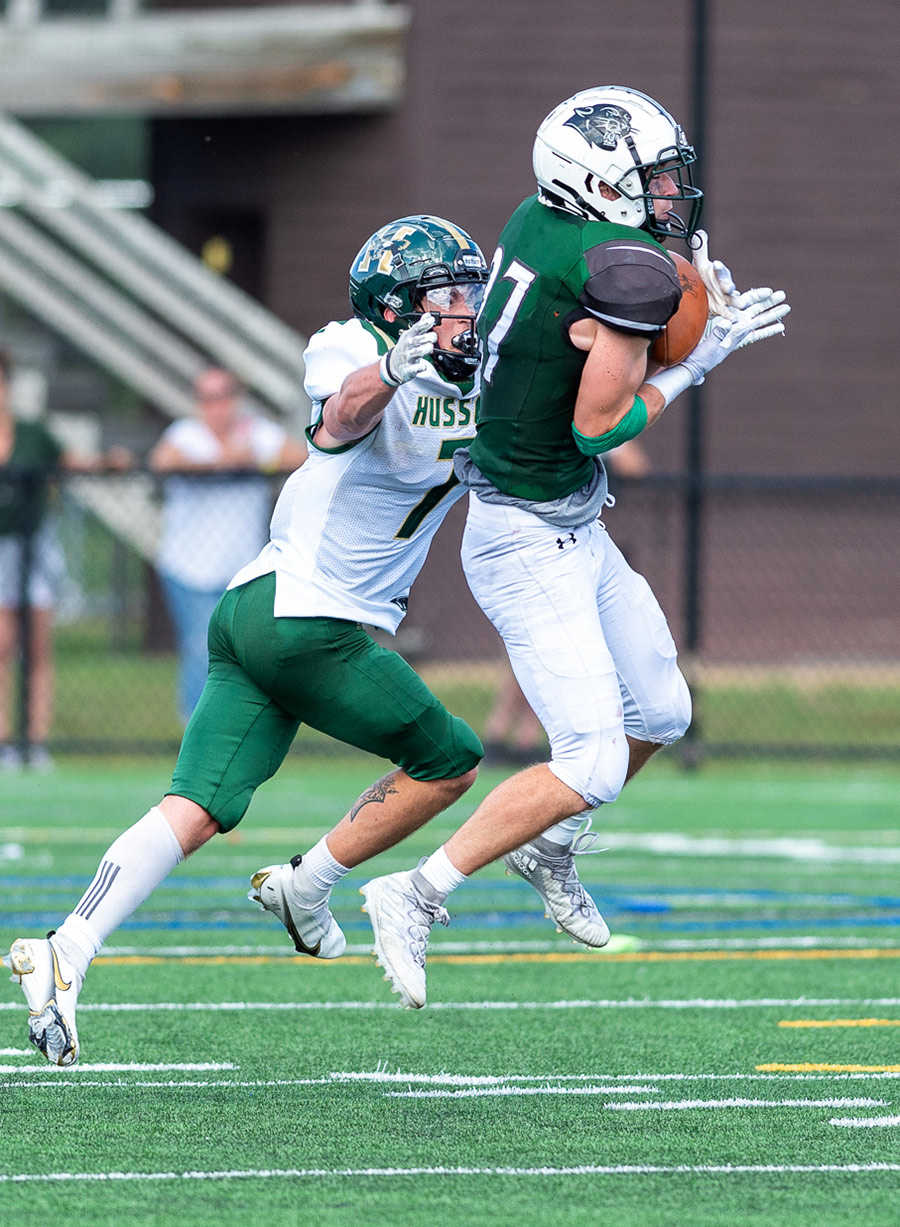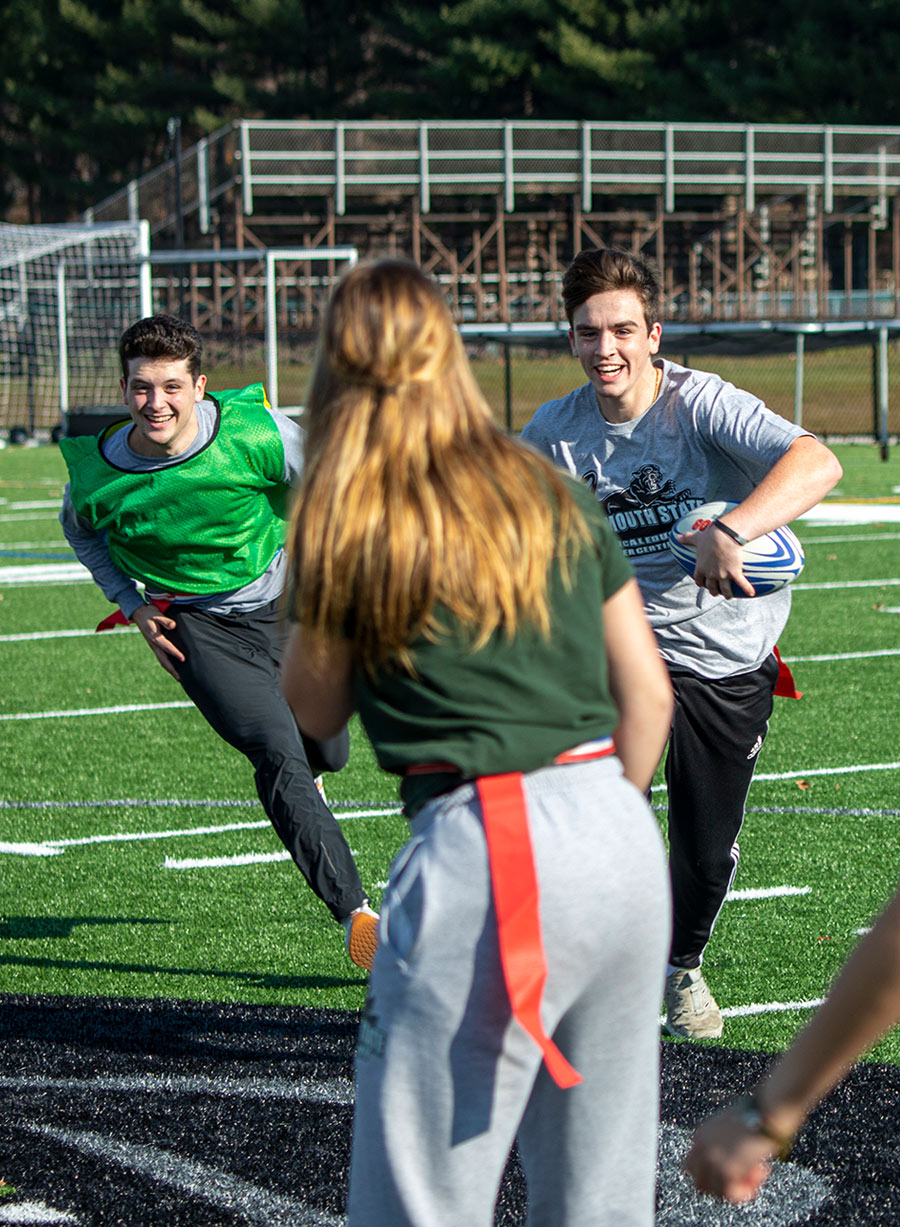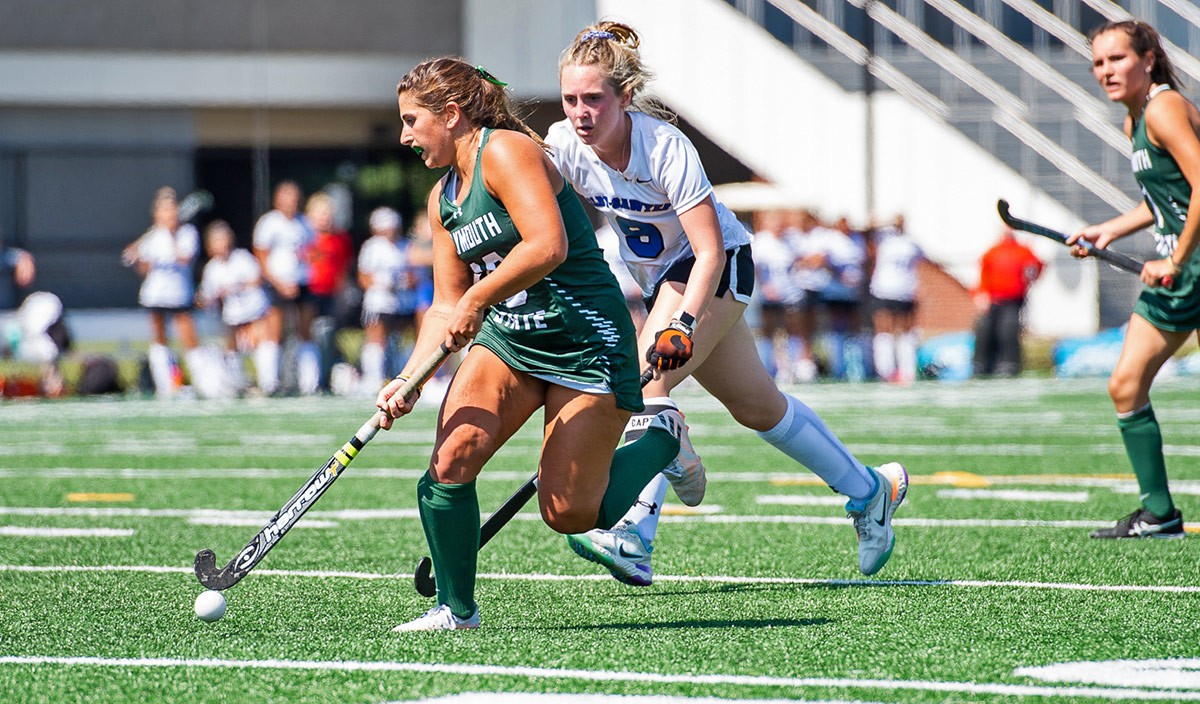Benefits All



“Once fall sports were in full effect, the field was used daily for up to 70 hours a week,” says Associate Director of Athletics Courtney O’Clair. Teams that took advantage this fall included Field Hockey, Football, and the Men’s and Women’s Lacrosse, Soccer, and Track and Field teams.
Strength and Conditioning coaches have made use of the turf field for training opportunities, Campus Recreation uses the site for intramural and club sports, and the Health and Human Enrichment academic programs frequently utilize the field for classes.
Head Football Coach Paul Castonia and Women’s Lacrosse Coach Sandy Bridgeman agree that the turf has been great for practice, as it is a more even surface than the grass that their teams used to practice on. “Grass fields would get torn up quite a bit considering the number of athletes and limited field recovery time from daily practices,” says Castonia. Bridgeman adds, “Clear line markings instead of faded painted lines on the grass allow players to perform better during practice and games.”
Football player Trevor Hnyda ’21 says that everyone on his team enjoys using the turf. “Practicing on the turf provided a sense of consistency for our team compared to the grass, as no matter the weather, the turf remains the same. It takes the focus off the condition of the playing surface and allows us to focus strictly on improving as a team.”
Practices in suboptimal weather are the norm in northern New England but are much easier on the turf. “Being able to practice outdoors on an actual field when the spring sports season begins in February will be a major benefit compared to practicing inside,” says Coach Bridgeman. Teams will no longer deal with a constant change of surface and can practice outside in elements that mimic a real game atmosphere.
Field Hockey Coach Bonnie Lord’s team had to spend the last seven years practicing on a turf field 12 miles from campus. Their “home” games were also played offsite, making it more difficult on athletes and student fans.
“The turf has given athletes a way to feel more like part of the campus community as it is easier for their roommates, friends and other athletes to cheer them on,” says Lord. A sizeable jump in her team roster numbers is a clear sign of the new field’s benefits. While past teams might have topped out at 15 players, Lord’s squad now carries 24 student athletes, and she uses the field as a cornerstone in her recruiting package.
Natalie Perry ’22 loves watching other teams’ home games and now enjoys the increased numbers attending her Field Hockey contests. “We used to have maybe 50 people come to a game when we played off-site, and now the stands are full and people are lined up on the fence,” she says. “The turf field is doing a great job building a relationship between all of the teams.”
Student groups are putting the new field to good use as well. “Ultimate Frisbee practices on the turf field twice a week, and these have become our most popular practices,” says Charlie Peachey ’22, club president. He credits the field for almost doubling the number of practice attendees.
Though the turf field has been in operation for less than a year, it’s hard to imagine the University without it. O’Clair notes, “There is additional availability, so I anticipate even more usage.” ■ Ryan Moyer ’24